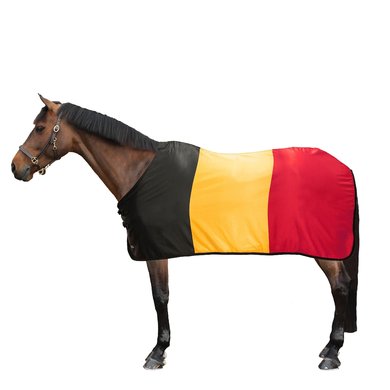Ardennais
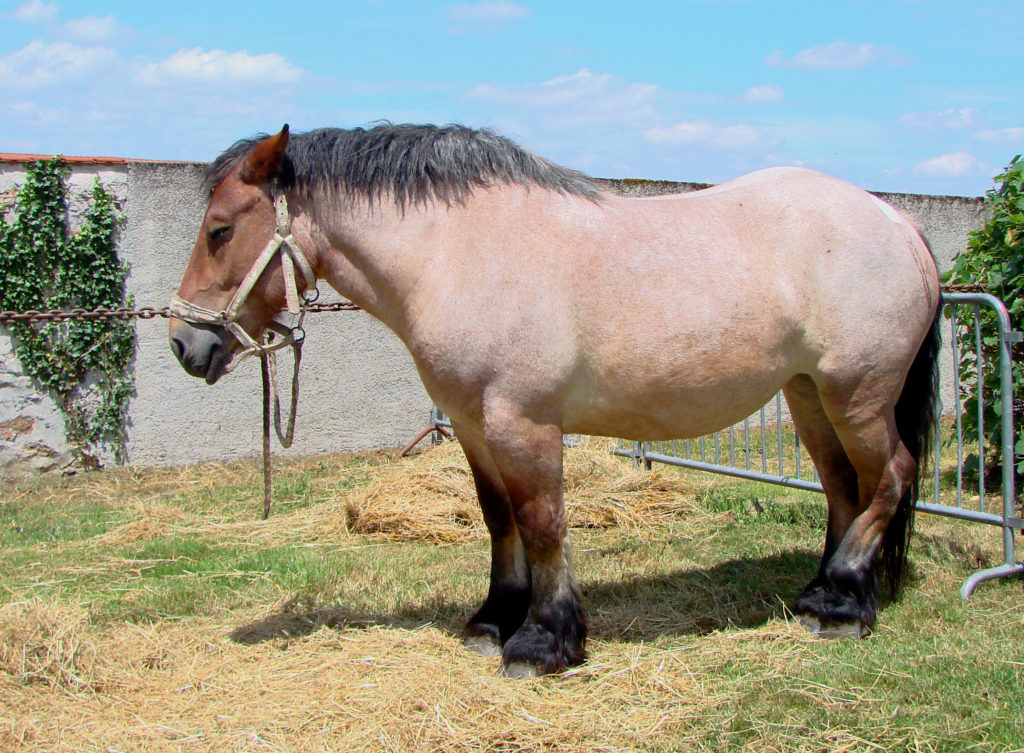
The Ardennais or Ardennes is one of the oldest breeds of draft horse and originates from the Ardennes area in Belgium, Luxembourg, and France. They are heavy-boned with thick legs and are used for draft work.
Their history reaches back to Ancient Rome, and throughout the years’ blood from several other breeds has been added to the Ardennes, although only the Belgian breed had any significant impact. The first Ardennes were imported to the United States in the early 20th century, and the first breed registry was established in Europe in 1929. The horses have been used throughout history as war horses, both as cavalry mounts and to draw artillery, and are used today mainly for heavy draft and farm work, meat production and competitive driving events. They have also been used to influence or create several other horse breeds throughout Europe and Asia.
Their history reaches back to Ancient Rome. The Ardennes breed could be a direct descendant of the prehistoric Solutré horse and is claimed to be descended from the type of horse described by Julius Caesar in his Commentarii de Bello Gallico. Caesar described these horses of Belgium as “rustic, hard and tireless”, and recommended them for use in heavy cavalry units. The early type was used by many later Roman emperors for military applications. The breed’s ancestors are thought to have been bred for 2,000 years on the Ardennes plains, and it is one of the oldest documented European heavy draft breeds. In the Roman era, the breed stood only around 14 hands (56 inches, 142 cm) high. Later, Napoleon added Arabian blood to increase stamina and endurance and used the breed in his Russian campaign. In 1780, the breed still stood only 1.42 to 1.52 metres (14.0 to 15.0 hands) and weighed around 500 kilograms (1,100 lb).
Percheron, Boulonnais and Thoroughbred blood were also added, although they had little impact. In the 19th century, Belgian draft blood was added to give the breed the heavier conformation it has today. The extra weight and size were desired to turn the breed into a very heavy draft breed, after their role as an artillery horse had diminished through the advent of mechanization, as well as a desire for a meat animal. The breed increased in size from an average of 550 kilograms (1,210 lb) to their current weight, which at the same time had the consequence of reducing their vigour and endurance. The first breed registry was established in Europe in 1929. Today there are 3 separate studbooks in France, Belgium and Luxembourg, although there is extensive interbreeding between all three. The Ardennes Horse Society of Great Britain was also formed in the late 20th century to preserve and promote Ardennes horses in Great Britain, but today is not recognized as a studbook or passport issuing organization by the British government and may not exist in any form.
The first Ardennes were imported to the United States in the early 20th century, but it is still not known precisely when. Originally, when imported to the United States, Ardennes horses were eligible for registration with the now-defunct National French Draft Horse Association of America or French Draft Horse Society. This organization published a studbook and registered six individual French draft breeds as belonging to a single breed, combining the information so that no totals of individual breeds are known. Many of these horses were imported to the United States with their breed being considered simply “French draft” and no individual type being specified. Some Ardennes horses imported to the United States before 1917 were called Belgians when they were imported and subsequently registered as Belgians. Ardennes horses have continued to be imported into the United States from Belgium, with imports occurring as late as 2004.
Belgian horse
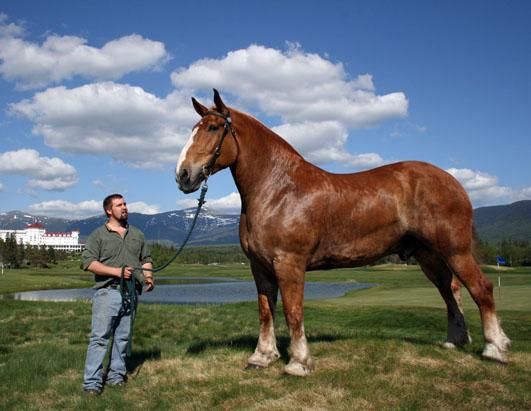
The Belgian or Belgian Draft, French: Trait belge, Dutch: Belgisch Trekpaard, is a Belgian breed of draft horse. It originates from the Brabant region of modern Belgium, and is one of the strongest of the heavy breeds. The breed associations are the Société Royale Le Cheval de Trait Belge/ Koninklijke Maatschappij van het Belgisch Trekpaard and the Eleveurs Wallons du Cheval de Trait Belge/ Vlaamse Fokkers van het Belgisch Trekpaard.
Historically, it is theoretically possible the Belgian may have had ancestors that were destriers in the Middle Ages, although no independent evidence supports this claim. The foundation stock for the Belgian was originally known as the Brabant. Other names for essentially the same breed include the Cheval de trait Belge, Brabançon, and Belgisch Trekpaard. Until the 1940s, the Belgian and the Brabant were essentially the same breeds. Following World War II, the Brabant in Europe was selectively bred to be thicker bodied and heavier, while in the United States, the Belgian was bred to be somewhat taller and lighter-bodied. The main use was as a farm horse. Closely related breeds include the Trait du Nord and Nederlands Trekpaard.
In 1887, the American Association of Importers and Breeders of Belgian Draft Horses was founded in Wabash, Indiana, to register and keep track of all Belgian Draft Horses. Today, the Belgian is the most numerous breed of draft horse in the United States.
Importation of Belgians to the United States slowed during the Second World War with Erwin F. Dygert transporting the last Belgians out of Europe as the war was beginning.
Belgian Sport Horse
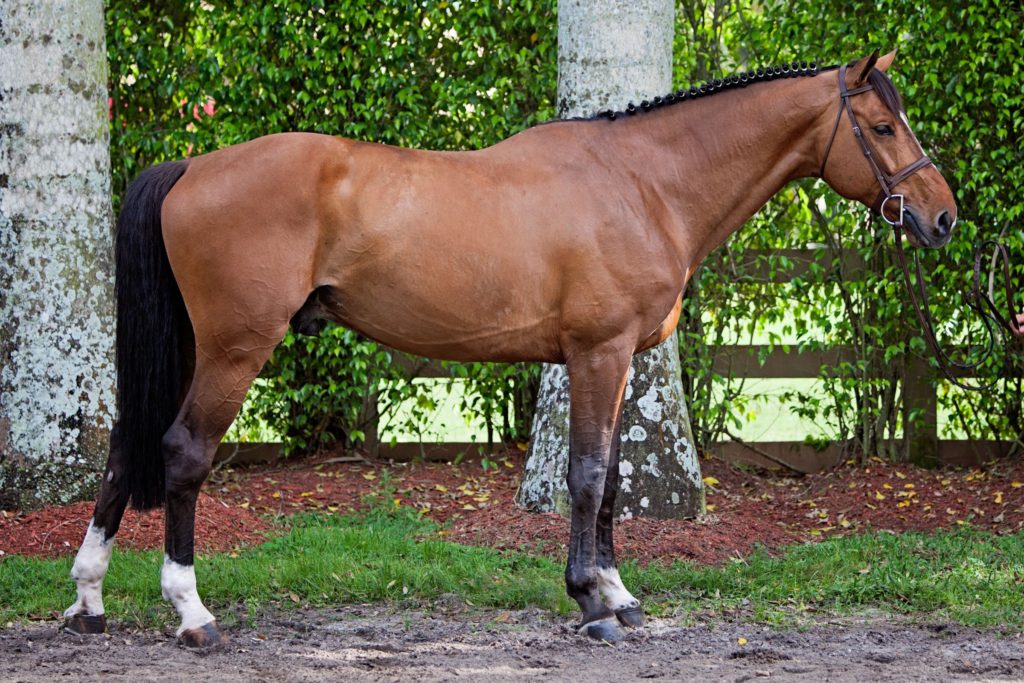
The Belgian Sport Horse, Dutch: Belgisch Sportpaard, French: Cheval de Sport Belge, is a Belgian breed of warmblood sport horse. It is one of three Belgian warmblood breeds or stud-books, the others being the Belgian Warmblood and the Zangersheide. It is bred for dressage, for show-jumping and three-day eventing.
The Belgian Sport Horse has its origins in the early twentieth century when warmblood horses were bred by cross-breeding imported Selle Français and Thoroughbred stallions with local animals of the Belgian Draught breed, with the intention of producing cavalry horses. Later influences were from Selle Français, Dutch Warmblood and Hanoverian. A breed society, La Société d’Encouragement pour l’Elevage du Cheval d’Armes, was established in 1920; from about 1930 the principal aim was to breed horses for leisure use and the name Société du Cheval de Demi-sang Belge was adopted. In 1967 it became a royal society, with the name Société Royale du Cheval de Demi-sang Belge.
Belgian Trotter
The Belgian Trotter, Dutch: Belgische Draver, French: Trotteur Belge, is a Belgian breed of a trotting horse. It is used mostly for racing in harness to a sulky, but may also run in saddled trotting races.
The Belgian Trotter originates from cross-breeding of local carriage and saddle horses with imported Thoroughbred stock, and so may also be called Halfbloeddraver, “half-blood trotter”. It has been influenced by the American Standardbred, the German Trotter and the French Trotter, to which it is closely similar, although it may be somewhat smaller and lighter.
Since 2009 the stud-book has been held by the Vlaamse Federatie voor Paardenwedrennen.
In 2012 total numbers were reported to be 1085.
Belgian Warmblood
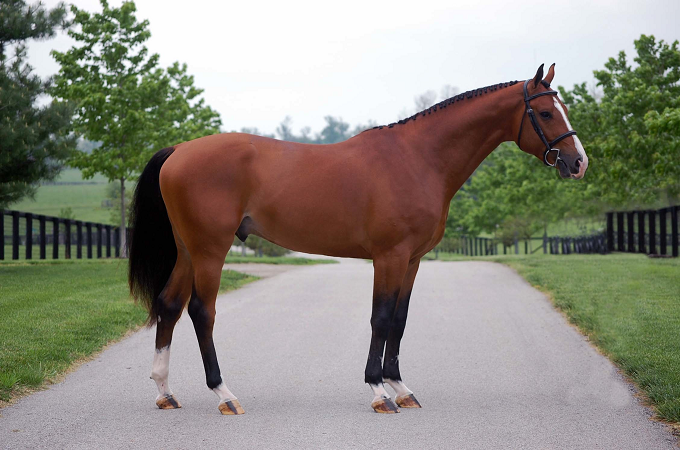
The Belgian Warmblood, Dutch: Belgisch Warmbloedpaard, is a Belgian breed of warmblood sport horse. It is bred for dressage, for show-jumping and for three-day eventing. It is one of three Belgian warmblood breeds or stud-books, the others being the Zangersheide and the Belgian Sport Horse – to which it is closely similar.
Horse breeders in the Netherlands, Germany, and France had been producing elegant saddle horses for hundreds of years. However, because the Belgian government was concerned about protecting the bloodlines of the Brabant (Belgian draft horse), it was not until the 1950s that breeders in Belgium were allowed to breed lighter saddle horses.
The foundation stock of the Belgian Warmblood included jumping horses from France and the Netherlands, as well as Hanoverians and Holsteiners from Germany. Through studbook selection, Belgian breeders were able to direct breeding towards their own goals.
The first stallion show for riding horses in Belgium took place, illegally, in 1953; the BWP was founded in 1955. Without native riding horses or all-purpose heavy warmbloods, Belgian breeders had to import stallions and mares. Over the course of 50 years, the BWP accrued a mare base of over 3,500 broodmares and produced a significant number of international-quality show jumpers. In 2010, the BWP was ranked 4th in the FEI/WBFSH International Show Jumping standings, below only the KWPN-Dutch Warmblood, Selle Francais and Holsteiner studbooks.
Flemish Horse
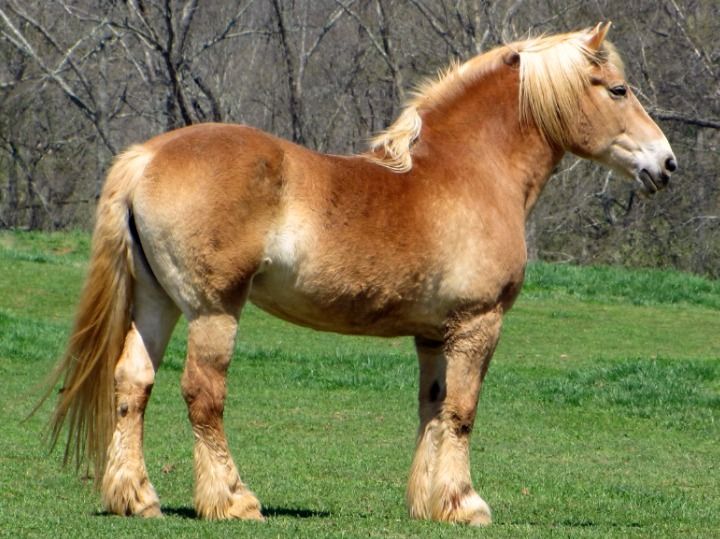
The Flemish Horse, Dutch: Vlaams Paard, French: Cheval Flamand, is a Belgian breed of draught horse. It became extinct in the nineteenth century when it was merged with the Brabant to create the Belgian Draught. From about 1993 it was recreated from some stock kept by Amish people in the United States. A breed association, Het Vlaams Paard, was formed in 1999. In 2005 the breed was officially approved by the Flemish government, and the breed association authorised to manage the stud-book.
Flemish horses became famous in Mediaeval times. They were among the gifts sent by Charlemagne to the Abbasid caliph Haroun ar-Rashid in 807.
It is an endangered breed. In 2013 total numbers were about 100 head, with about 35 broodmares and 5 stallions.
The Vlaams Paard, like several other draught breeds with Belgian Draught ancestry, may be affected by junctional epidermolysis bullosa. Unlike the Belgian Draught, it is not susceptible to chronic progressive lymphoedema
Trait du Nord
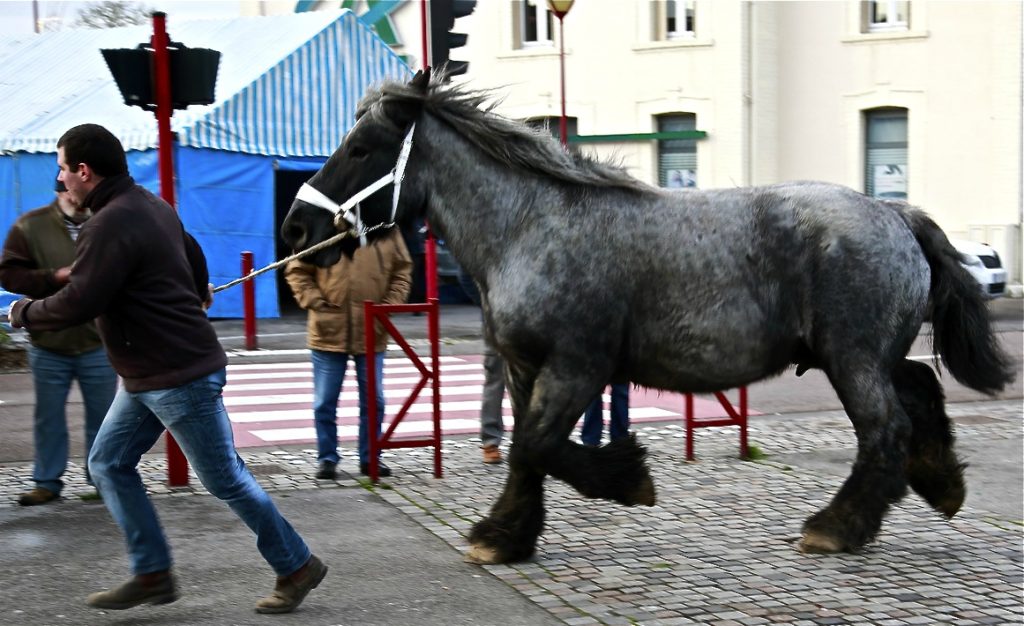
The Trait du Nord, previously also known as Ardennais du Nord or Ardennais de type Nord, is a breed of heavy draft horse developed and bred in the area of Hainaut in western Belgium and northeastern France. Originally considered a subtype of the Ardennes, it was recognized as an individual breed with the opening of a studbook in 1903. Developed in the fertile Flemish grasslands, it was bred for size and pulling power for agricultural work. By 1855, the horses bred near Hainaut were considered by some veterinarians to be superior to other Flemish draft breeds. The Trait du Nord was used extensively in mining from the late 19th century through 1920, with lesser use continuing through the 1960s.
The Trait du Nord continued to be used extensively for agriculture through World War II, but after the war, this usage, and the breed population, declined significantly as farming became increasingly mechanized. During the mid-20th century, the breed was in demand for the production of horse meat, and due to this was bred to be larger and heavier. In the early 1970s, the market for horse meat began to decline, and the Trait du Nord, like many European draft breeds, was in danger of extinction. It was not until the 1990s that the breed experienced a slight revival through an increased interest in recreational riding and driving.
The Trait du Nord is large, with stallions weighing upwards of 1,000 kilograms (2,200 lb), and is bred for traction ability and pulling power. The breed is found in many solid colors, although bay and roan are the most common, and is known to be gentle and easy to handle. Two slightly different types of Trait du Nord are found – a larger type used for heavier pulling and a lighter type used for faster work. The breed is considered to be endangered by the French government, with fewer than 100 new foal births a year. The national breed registry in France is working with local groups in an attempt to promote this breed and bring population numbers back up. The breed currently has a high risk of inbreeding, due to the low number of breeding stallions, and is at risk of extinction.
Zangersheide
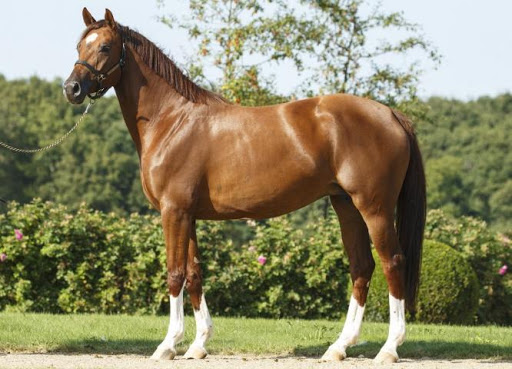
The Zangersheide is a Belgian breed or stud-book of warmblood sport horses. It is one of three Belgian warmblood breeds or stud-books, the others being the Belgian Sport Horse and the Belgian Warmblood. It is bred at the stud of the same name near Lanaken, in the province of Limburg in eastern Flanders, close to the Dutch border. Breeding and selection are directed at performance in show-jumping.
The Zangersheide stud was established in the 1970s, with the aim of breeding and selecting horses based on their performance in show-jumping. A stud-book was started in 1992 or 1993; registered animals have a Z suffixed to their names. Registration is based on selection for show-jumping performance, and the stud-book is open to any breed of performance horse; it includes horses of Hanoverian, Holsteiner and Selle Français origin.
In 2014 the breeding stock amounted to some 2700 animals, of which 340 were stallions. In 2019, its conservation status was reported to DAD-IS as “at risk.
In the show-jumping ranking published by the World Breeding Federation for Sport Horses and the Fédération Équestre Internationale in May 2019, the Zangersheide stud was in second place after the Dutch Koninklijk Warmbloed Paardenstamboek Nederland or KWPN.
